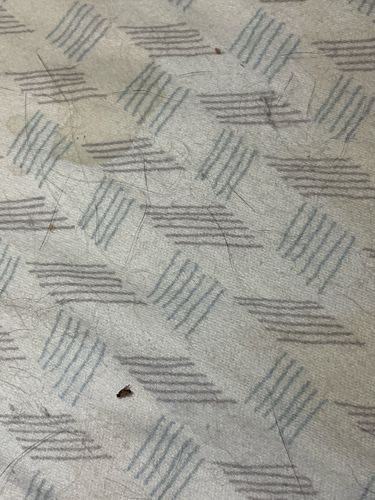Carpet Beetle (likely a Varied Carpet Beetle or Black Carpet Beetle)
Scientific Name: There are several species, common ones include *Anthrenus verbasci* (Varied Carpet Beetle) or *Attagenus unicolor* (Black Carpet Beetle). Without a clearer view, a specific species cannot be definitively identified.
Order & Family: Order: Coleoptera, Family: Dermestidae
Size: Larvae can range from 1 mm to 6 mm in length. Adults are typically 2 mm to 5 mm long.

Natural Habitat
Indoors, carpet beetles are commonly found in homes, museums, warehouses, and other buildings, often in carpets, rugs, upholstered furniture, clothing, and stored food products. Outdoors, adults can be found in flowers.
Diet & Feeding
Larvae feed on a variety of animal products, including wool, silk, feathers, fur, leather, taxidermy, dried meat, and pet food. They also consume synthetic fibers if soiled with sweat or food. Adult carpet beetles feed on pollen and nectar.
Behavior Patterns
Carpet beetle larvae typically avoid light and feed in dark, undisturbed areas. Adults are attracted to light and are often found near windows. Their life cycle involves four stages: egg, larva, pupa, and adult.
Risks & Benefits
Risks: Carpet beetles are significant pests of stored products and textiles, causing damage to clothing, carpets, and other items made from animal fibers. They do not bite or sting humans, but some individuals may experience skin irritation or allergic reactions to their bristles. Benefits: In natural ecosystems, some species of carpet beetles play a role in decomposition.
Identified on: 8/27/2025